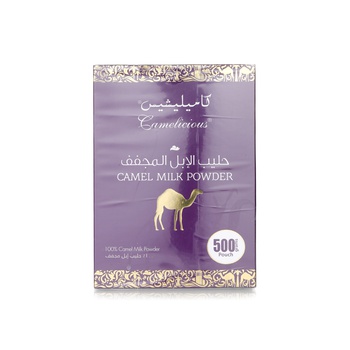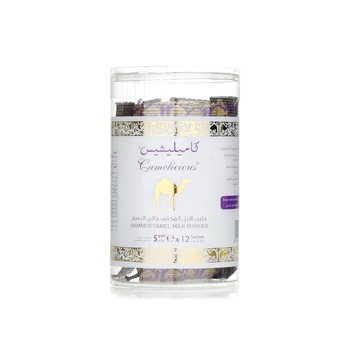How and when did the Camelicious story begin?
Mutasher: The idea of a camel-milking facility was born at the Central Veterinary Research Laboratory in Dubai, more than 30 years ago. Vice President and Prime Minister of the UAE and Ruler of Dubai, His Highness Sheikh Mohammed bin Rashid Al Maktoum, commissioned researchers to look into the health benefits of camel milk and the commercial viability of a camel dairy. Studies commenced with just 25 camels, and after years of intensive research, it was decided that Camelicious should be constructed in 2003. By the middle of 2006, we were ready for production – we had 200 camels at that stage – and in August 2006, the first commercial products were on shelves. We started with plain milk, added flavoured milks a few months later, then ice creams and now we have more than 40 different products. So, what started as an idea is now hitting shelves around the world.
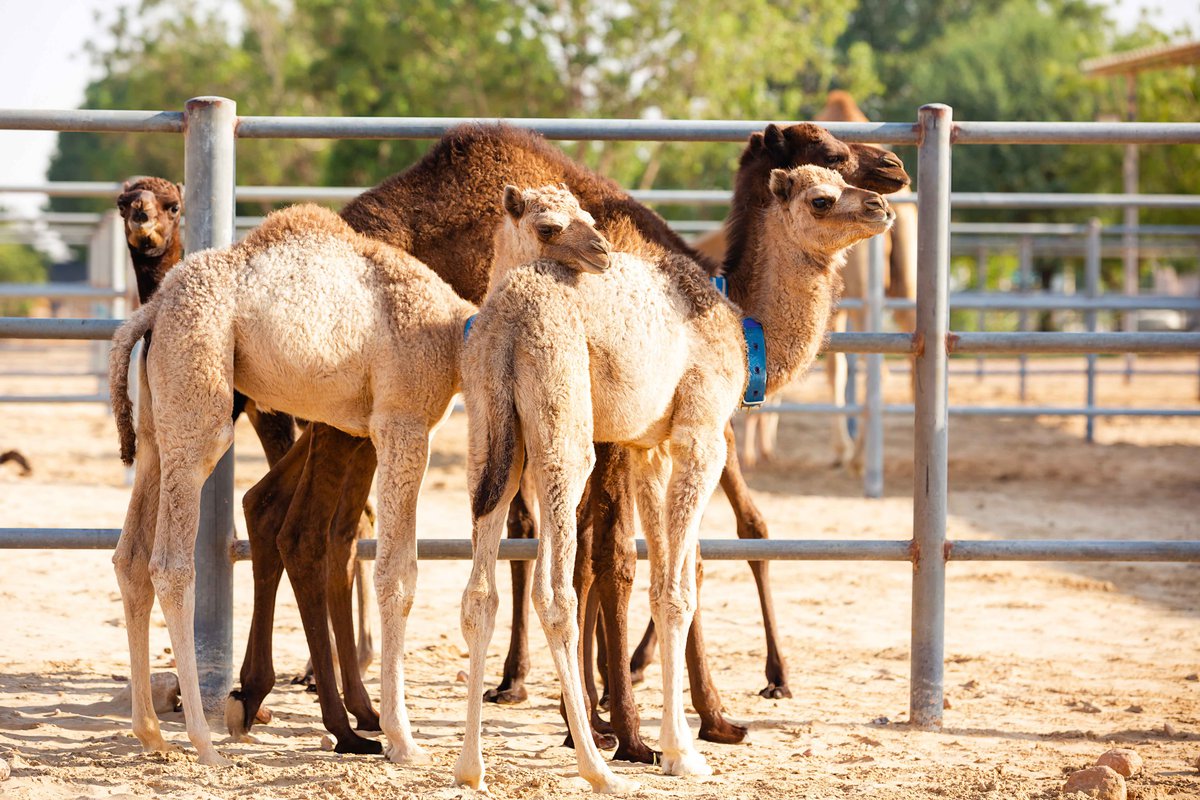
How many camels do you have at the facility today?
Mutasher: Nearly 7,000. We’re expecting to have 7,500 by the end of this year and our target is 20,000 eventually.
Where do your camels come from? Do you have specific breeds?
Dr Judit: When talking about types of camels, one doesn’t tend to refer to specific breeds as you would with bovines – we usually just focus on the countries that they originate from. We have camels from the UAE, surrounding GCC countries, Sudan and Pakistan. The number of camels is constantly increasing because of our selective breeding programme, which focusses solely on milking camels – so not those for racing or beauty contests. We’re interested in the animals that not only produce a large amount of milk, but those that are easy to train and milk, too.
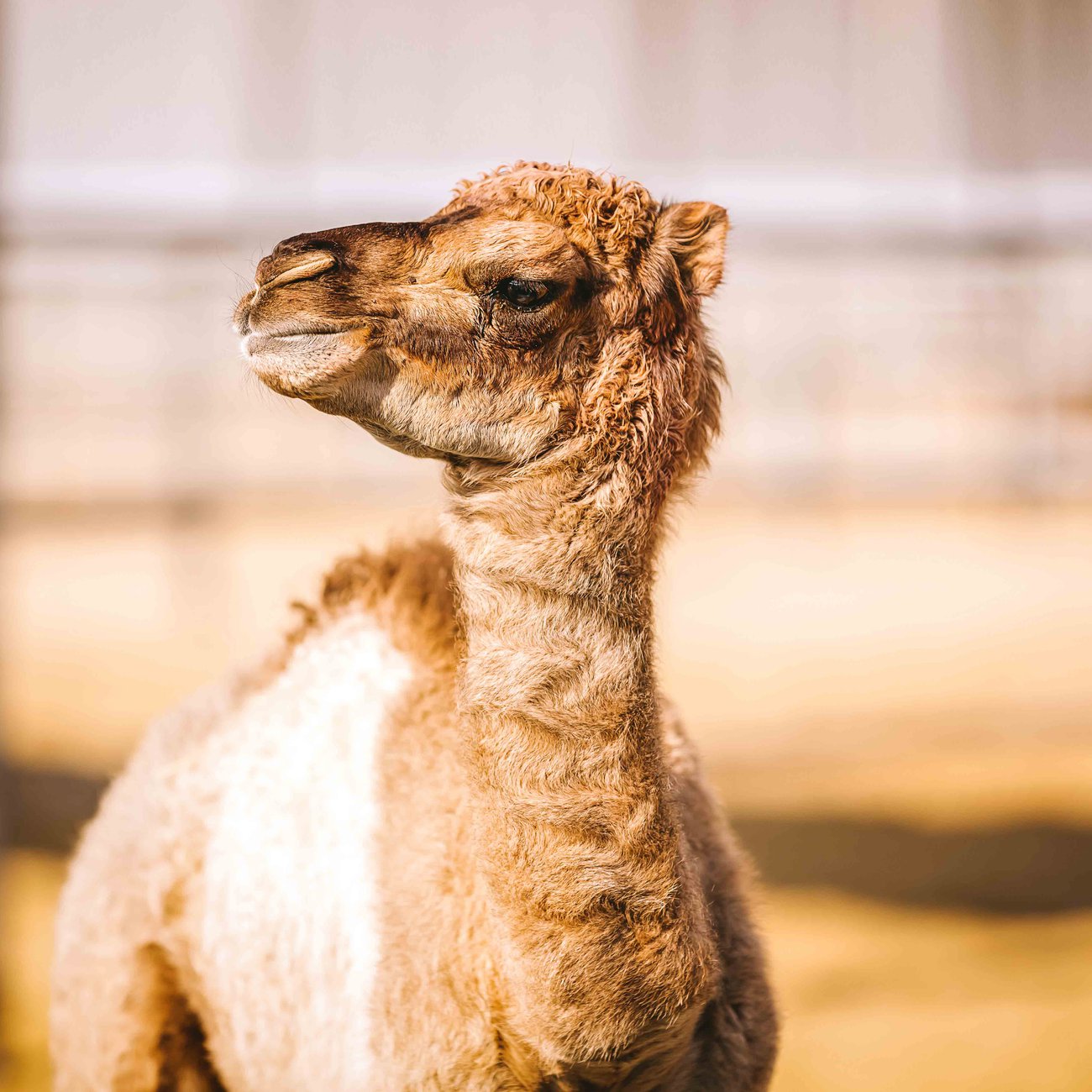
Waiting patiently for mom to return from milking
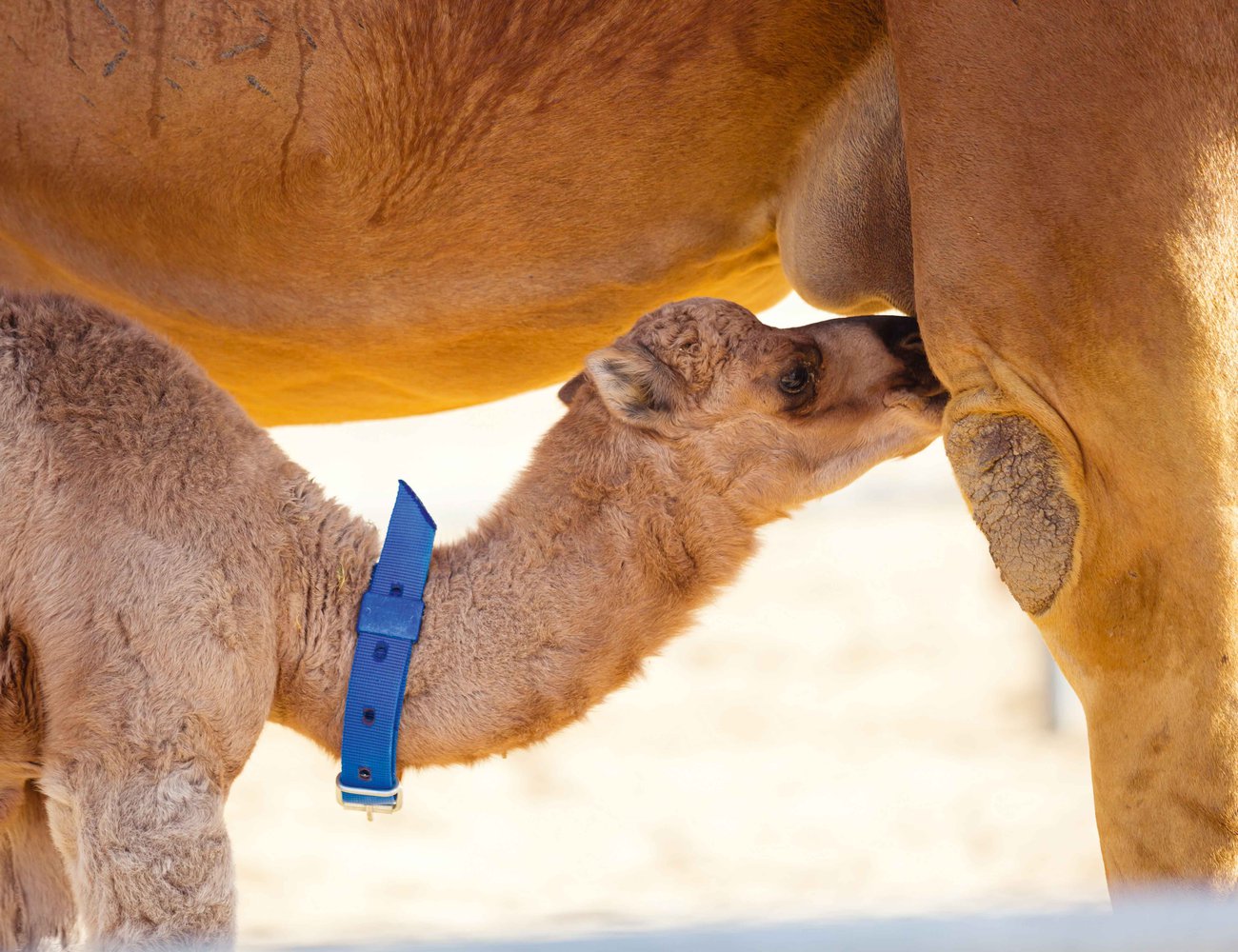
Calves suckle residual milk
Is milking camels difficult?
Dr Judit: It can be. Traditionally, the calf would initiate its mother’s milk flow by suckling. As we’re using an automated system to encourage the release of milk, we need to train the camels to get used to this process.
How many litres of milk can a camel produce?
Dr Judit: Seven litres per day is the average – but it depends on the type of camel. Summer is peak season, as they don’t face heat stress and actually produce more milk.
Koushik: We’re currently processing around 8,500-9,000 litres per day in the dairy – and as mentioned, this will increase during summer.
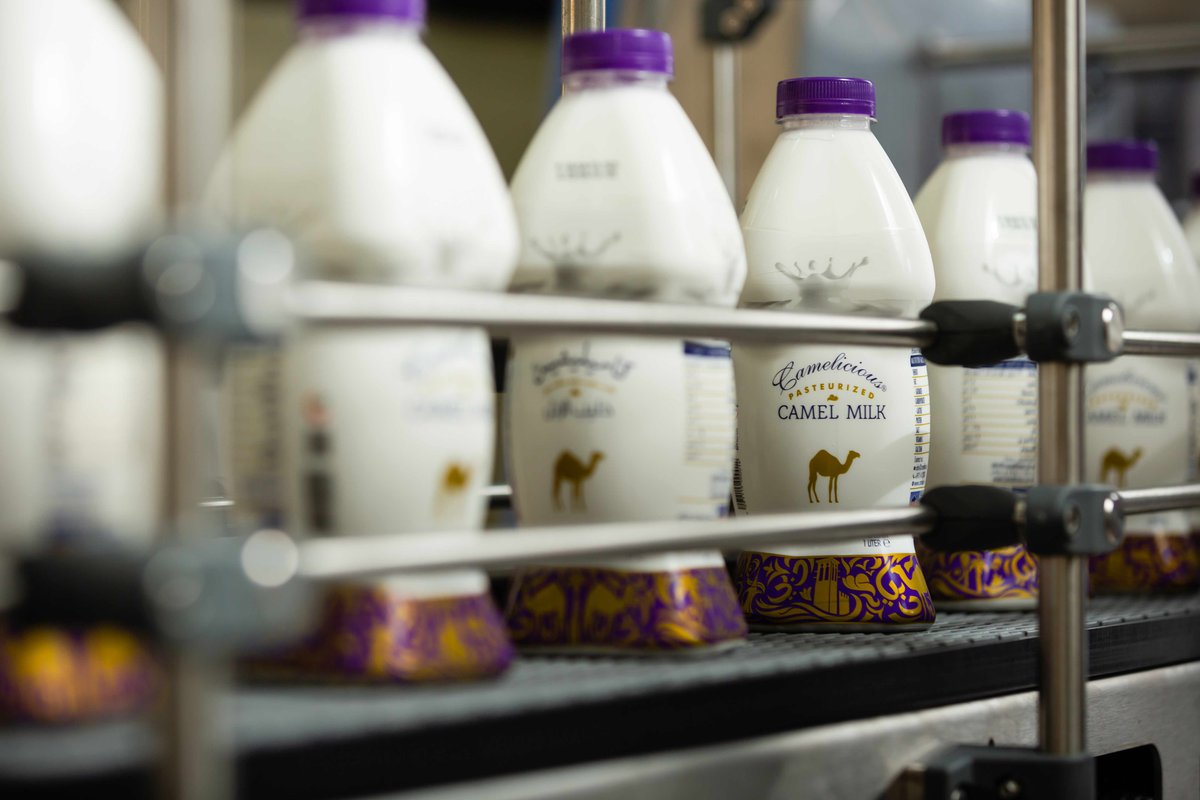
Are calves separated from their mothers on the farm?
Dr Judit: No – and this is one of the biggest differences compared to a conventional dairy. We keep all calves with their mothers for up to a year, as the emotional bond between a baby and its mother is so strong. If a camel loses its calf, it will stop producing milk. The only time the camels are apart is during the milking process, but this takes only seven minutes. And we milk the camels for just two minutes, to ensure there is enough residual milk for the calves to suckle. Straight after milking, mothers and calves are walked, too. One of our main goals is to make sure we keep our camels for a long time. Some of them are onto their sixth or seventh baby.
What do you feed the camels?
Dr Judit: Our feed is basic – lots of roughage like hay, alfalfa and wheat bran. We don’t use any hormones or steroids.
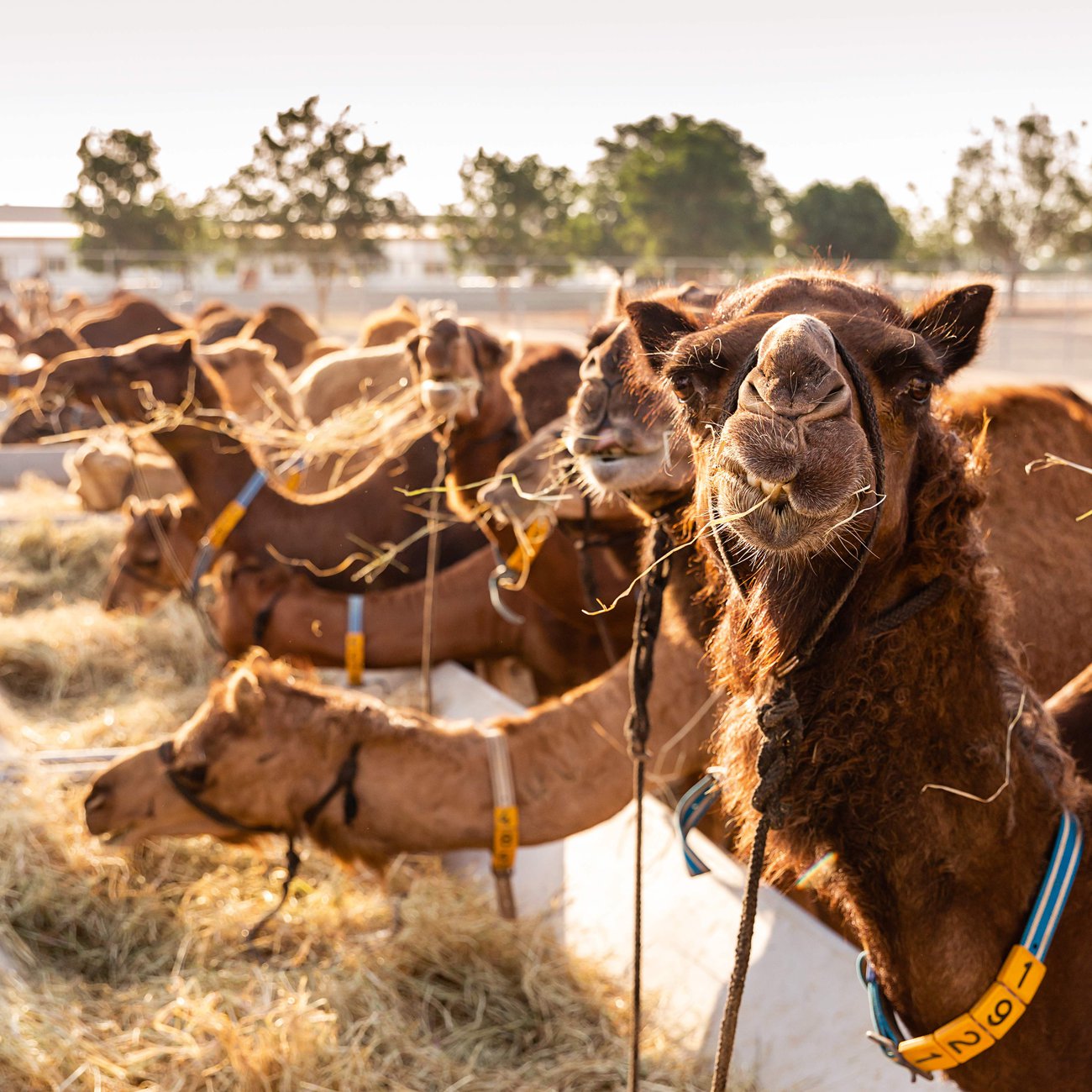
Camels are fed natural grasses
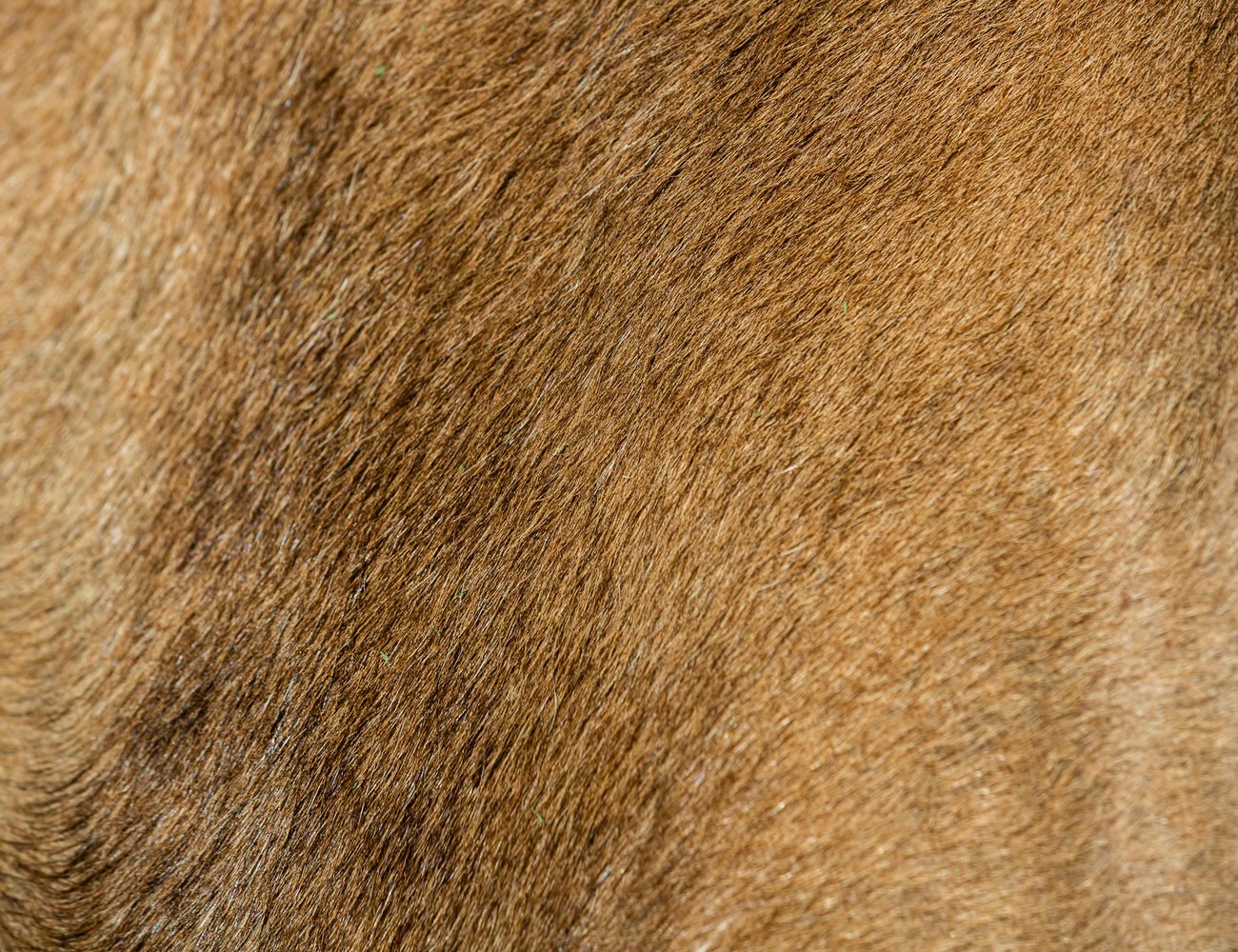
Animal welfare is paramount
What if a camel gets sick?
Dr Judit: We have a well-trained and dedicated team of vets and vet assistants who are available 24 hours a day. We’re constantly doing vigorous check-ups and screening for infection and diseases. If an issue does arise, we can treat the camel immediately. There’s excellent quality control in place, in terms of testing raw milk from our side, as well as from the factory’s side, too. We work hard to make sure we have healthy, happy camels that are producing good milk.
Is it expensive to run a camel dairy?
Mutasher: Yes, and this is why the price of camel milk is high. It all comes down to commercial calculations. The average camel produces 2,000 litres of milk per year. Their gestation periods are 13-14 months (around 410 days) and they’re dry for five months before this. This means that for approximately 18 months, a camel won’t produce any milk. The cost of keeping one camel for two and half years needs to be compensated by the milk it can produce. The average gestation period for dairy cattle is around 283 days and dry periods can be up to two months.
"We work hard to make sure we have happy, healthy camels"

Deputy general manager Mutasher Al-Badry
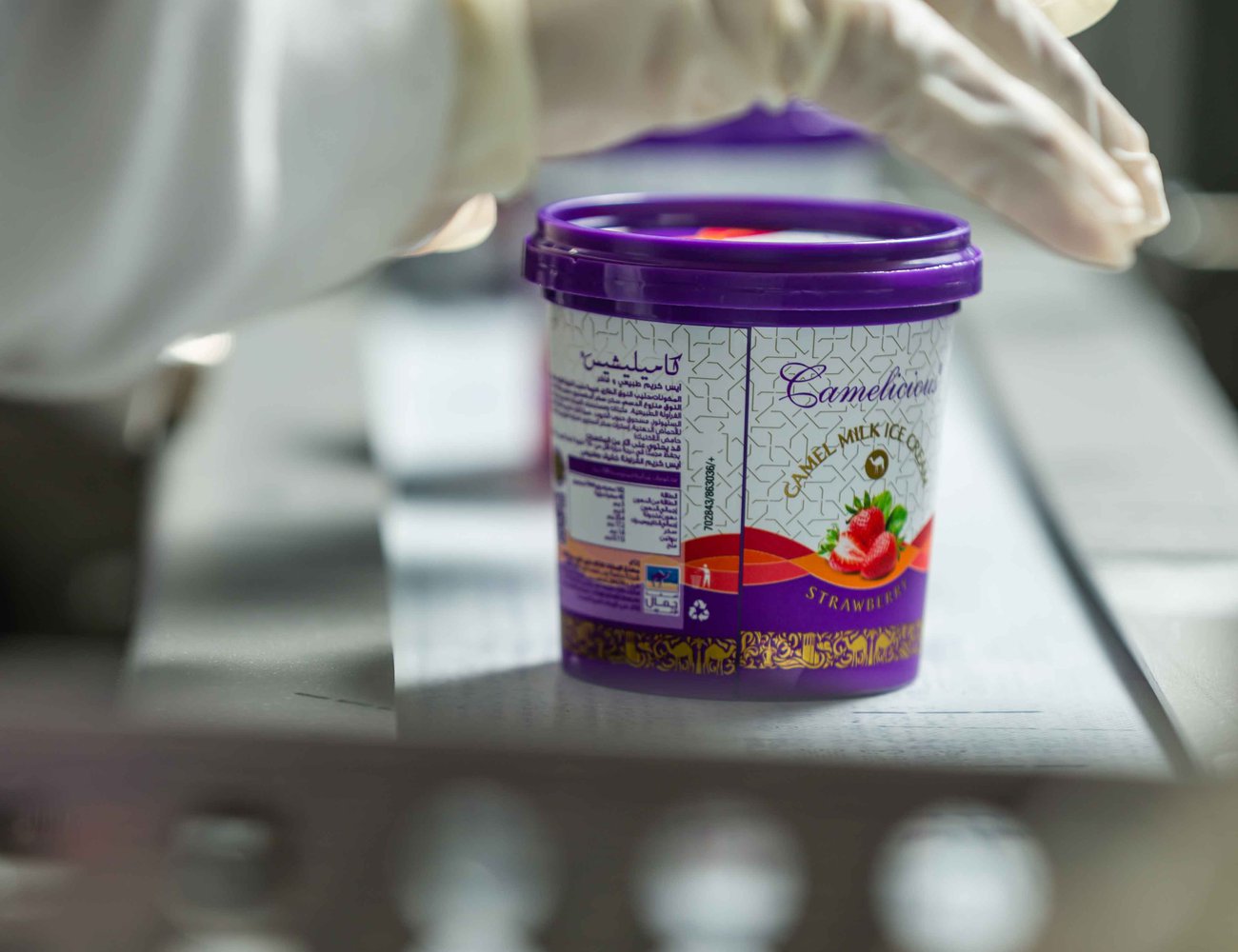
Camelicious produces 10 ice cream flavours
Please give us more details about your range of products.
Koushik: In addition to the plain and flavoured milks and ice creams, which come in 10 flavours, we have laban, functional drinks for families (Glory for ladies, Trigger for men and Wonder for kids); coffee lattes and cappuccinos; UHT milk, milk powder, baby food, ghee and protein bars. We also export varieties of cheese to Russia and we have camel milk shampoo. We’re constantly developing new products and we’re proud pioneers in the camel milk industry. We use honey or natural fruit sugars to sweeten products and only organic ingredients, so no flavourings, sucrose or preservatives.
Is it true that your fresh camel milk has a shelf life of 30 days? How is this possible?
Koushik: Yes, that’s right. We recently launched a new clean filling line, which washes, fills and caps each bottle under positive pressure. What this means is that no contaminated air enters the line, and any air that is in there, comes through a hyper filter. Processing pasteurised milk like this allows for a longer shelf life without using any preservatives or additives. Camel milk has natural preservatives, which also helps. Usually, fresh milk will only last four or five days.
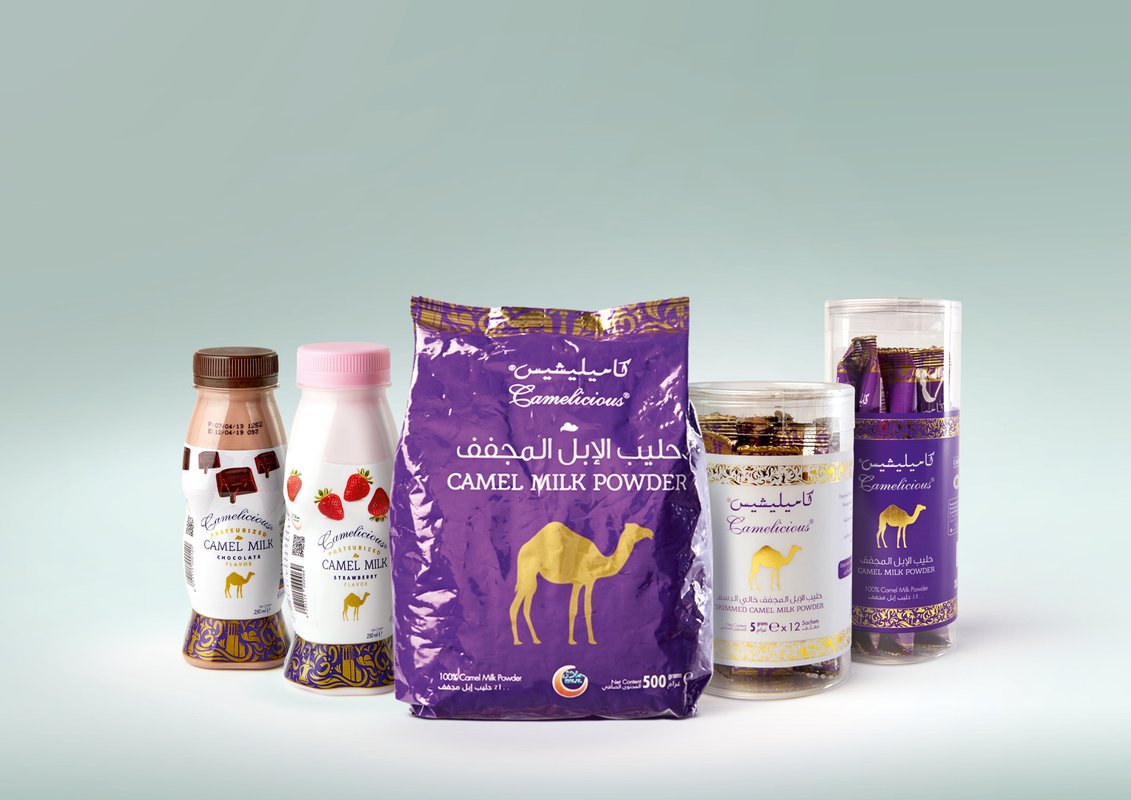
Is sustainability a key focus of Camelicous?
Mutasher: Yes, it is. We recently signed an agreement with Total to construct a solar power plant that will have a production capacity of 3.7 megawatts. We’re hoping this will be ready by the end of this year and it will mean that the farm and all our facilities will be powered by this. We’re also working with the University of Sharjah, Dewa and a consulting company from Germany on a project that will convert camel manure into energy using thermal technology.
Besides its numerous health benefits, how is camel milk used in the beauty industry?
Mutasher: Camel milk has naturally occurring anti-ageing properties such as elastin, vitamin C and lanolin acid, which can be used topically in creams and soaps. It also has great moisturising properties and can provide a calming and soothing effect on the skin. Research has also shown that it has beneficial properties for treating psoriasis patients by both ingestion and topical application.

